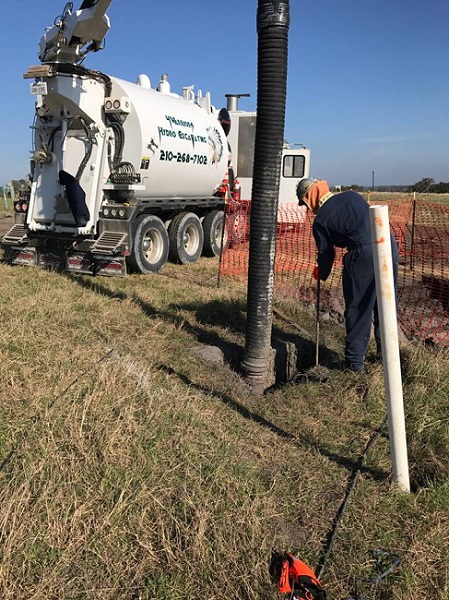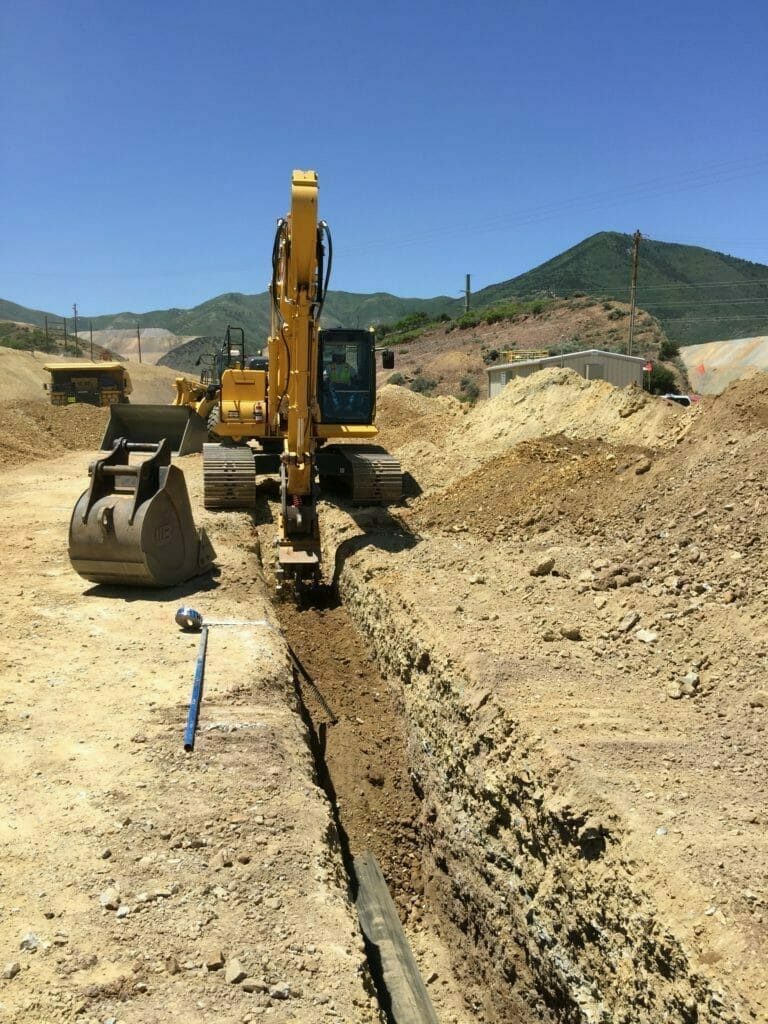9 Simple Techniques For Demolition
Wiki Article
What Does Excavator Do?
Table of ContentsGrading Contractors for DummiesNot known Details About Demolition 6 Easy Facts About Excavating Contractors ExplainedOur Excavating Contractors PDFsThe Ultimate Guide To Grading Contractors


Scrapers or Pans excavate dirt in one area, haul and dispose the soil in another place (excavator). It is tough to match the efficiency of scrapes for cut/fill dirt procedure if the haul distance is much less then a mile. Scrapers are normally pulled by a rubber tire wheel tractor and also are in some cases pushed via the cut location by an excavator.
There are often times that scrapes are not used for website grading and a dump vehicle is employed: the haul might be to long, the haul may go across roadways where scrapes are not allowed, difficult rock might be run into, equipment availability, etc. Discard trucks are in typical use and also possibly need little discussion.
"Rock body" beds, on the other hand, have no tailgates and can discard any dimension rock, although their quantity capacity is diminished. Compaction Tools increases the density of the soil and in some situations offers a smooth, rolled surface area.
An Unbiased View of Demolition
From a basic examination pit to percussion drilling to core exploration the proprietor has increasingly more pricey choices that produce significantly better data about the website underground. For instance, the Proprietor on a 100,000 SF structure task may authorize twenty boring areas with split spoon soil samples taken till rock is reached and afterwards core examples of rock.Recognizing the type and high quality of rock (from the core samples) and location of rock (from the soils boring) is a real advantage in jobsite planning. On the other hand, the Proprietor of a 100,000 SF structure may determine to continue with no geotechnical screening whatsoever. The decision regarding geotechnical screening is usually made by a Proprietor without any input from the Building and construction Supervisor.
An expertise of the approximate area of the rock assists the Building Supervisor to plan the series of actions adhering to rock excavation. If rock is in one corner of a big structure job, for example, the earth excavation might begin at the contrary end of the structure in order to begin foundation work soonest.
Beginning the foundation job early would be an excellent concept if the rock might be eliminated by ripping. If the rock is extremely hard as well as requires significant blasting, it might be sensible to hold foundation job till the blasting is completed. The Building Manager ought to work with these kinds of decisions and also make use of all the technological day readily available.
Not known Details About Concrete Contractors
Unclassified excavation stipulates that all rock or other unexpected materials (omitting hazardous products) come across in the sitework will certainly be the obligation of the Contractor at no adjustment in agreement price. An unidentified excavation is easier from a book-keeping viewpoint as well as places the responsibility for geotechnical conditions onto the Sitework Specialist.It's impressive what a heavy rain can do to a building and construction job. Prior to the rain, the website might be dry, hefty equipment successfully moving planet, the various other professions smoothly executing their work.
In many areas of the world, the Building and construction Supervisor need to keep in mind a simple reality: IT WILL CERTAINLY RAIN. Excellent planning can decrease the damage and interruption of a hefty rainfall to a jobsite. Often the excavation as well as grading is left to the Sitework Specialist (as well as their Foremen is accountable to monitor as well as direct the hefty equipment and also operators).
For That Reason the Construction Manager must be continually knowledgeable about what rain will do to the task site. It is not uncommon for the Sitework Supervisor to work their heavy equipment for optimal efficiency and also hope it doesn't rainfall. Among the most effective ways to plan for rainfall is to slope all qualities to drain and to smooth rolled the surface prior to a rain.
The Main Principles Of Excavation Contractors Near Me
The Construction Manager must be discerning sufficient to insure that hefty rain does not quit working on the task much longer than essential. Daily conversations with Sitework Foremen might be needed to accomplish this objective. Any time excavation is needed listed below the existing water table on a job, the process of dewatering need to be thought about.In an absolutely cohesive dirt, the water takes a trip so slowly through the clay or silt that dewatering is not usually necessary for the reasonably brief time of excavation. Dewatering may be required for a solitary footing excavation or for a whole task site. The most usual dewatering approaches are trench drains, deep wells and well factors.

Ground water infiltration i was reading this can likewise be lowered by cutoff techniques such as sheet loading. High dewatering costs have actually paled the revenue margins on much too several projects.
This choice should constantly be considered when examining the prospect of dewatering. Undoubtedly the option is just practical if gravity can run the water to reduced ground. Trench drains can be cut with a backhoe and land clearing services full of a coarse, granular material (# 4 rock as an example), but care needs to be exercised in picking the water electrical outlet kind and location.
Indicators on Demolition You Should Know
A siphon, by definition, makes use of atmospheric stress to bring water from one altitude, up over a challenge, to a reduced elevation. The pipelines in a siphon system need to be impermeable and some resourcefulness is usually needed to entirely fill up the siphon pipeline. The siphon pipeline need to be full for the siphon to begin.A deep well consists of a pump, hose and also a vertical well casing. The pump intake is at the base of the well housing (generally some crushed stone is put there as a filter medium) (mini excavator). The water is inflated the tube, out of the well housing, and also to a suitable discharge location.
In a rugged sand, as an example, a large area can be pumped to near the pump consumption altitude. A much less permeable soil, on the various other hand, decreases the efficiency of a deep well. Because the pump is usually at the bottom of the deep well, there are no elevation restrictions because of vacuum lift, and also deep wells can reduce the groundwater over 50 feet.
Under of the wellpoint there is a 2 foot long display and also valve, water jets out of this shutoff and creates an opening right into which the wellpoint pipeline can be decreased. This opening is typically you could try here made a bigger size (for instance 10 inches) to allow for a coarse sand backfill to help filter the water (concrete contractors).
Report this wiki page